Each year, Katie Emond tries to make jam from something she forages from the local landscape. This time, she had her eye on the autumn olives growing along a dirt road leading to her house in Eastham. And perhaps because the plants are so plentiful and their fruit not widely coveted, she allowed a jam-loving photographer to join her in her experiment.
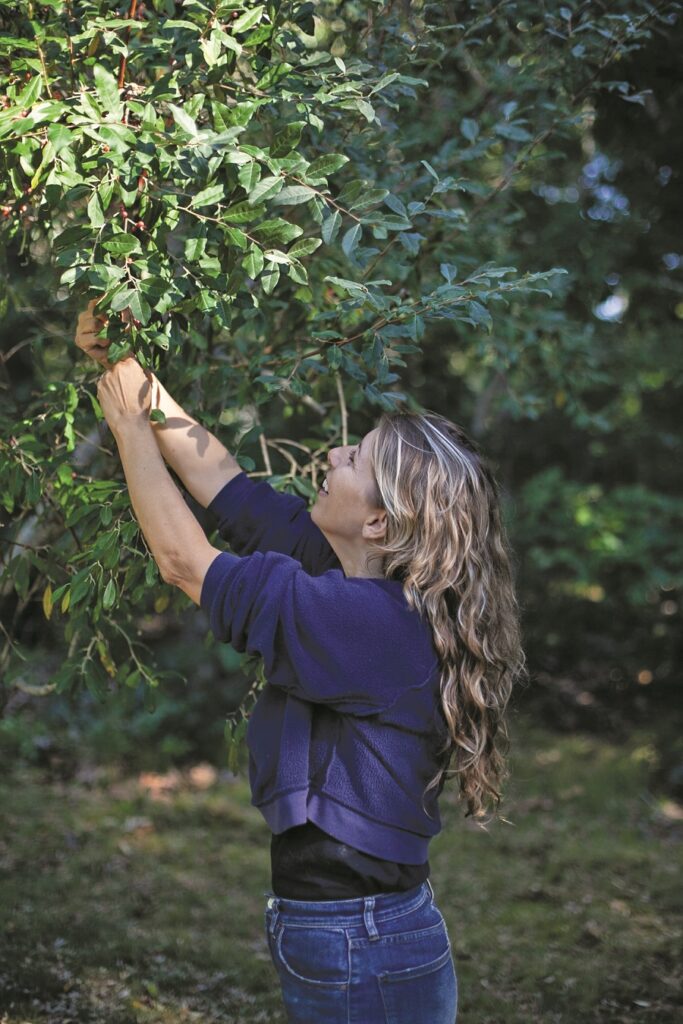
She had learned about the potential of these small red berries from Barnstable landscaper Dave Scandurra, who posted about them on his Edible Landscape Instagram account. On the Cape, the fruits of the autumn olive ripen in September and October, and Emond often eats them straight from the bushes with her young son, Cosmo.
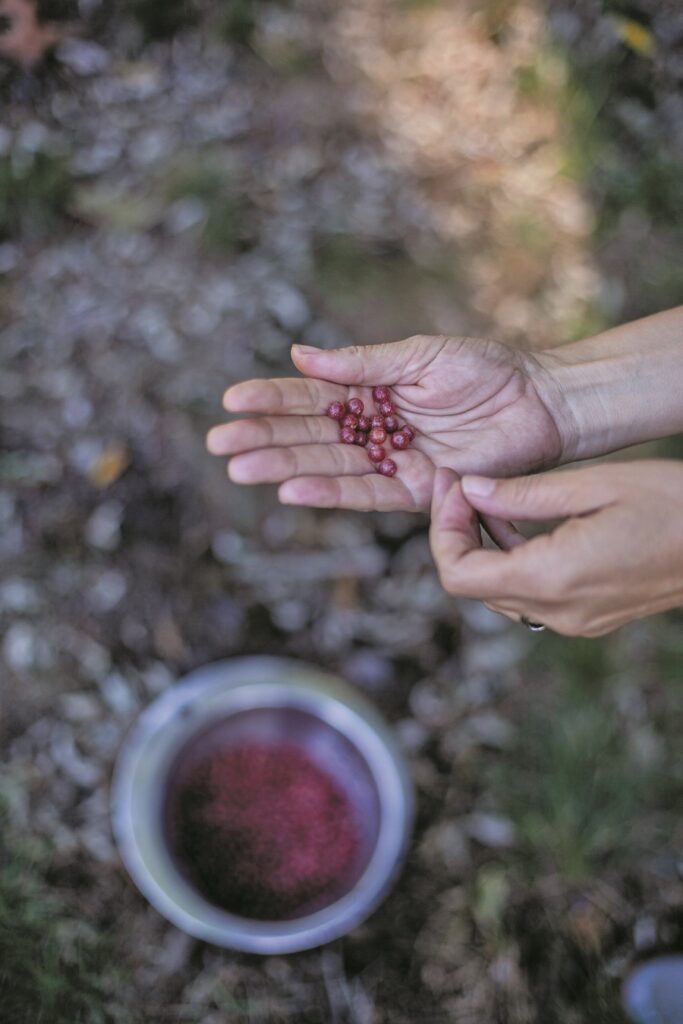
Despite its name, the autumn olive (Elaeagnus umbellata) is not botanically related to the olive; rather, its leaves resemble the elongated silvery leaves of the olive tree.
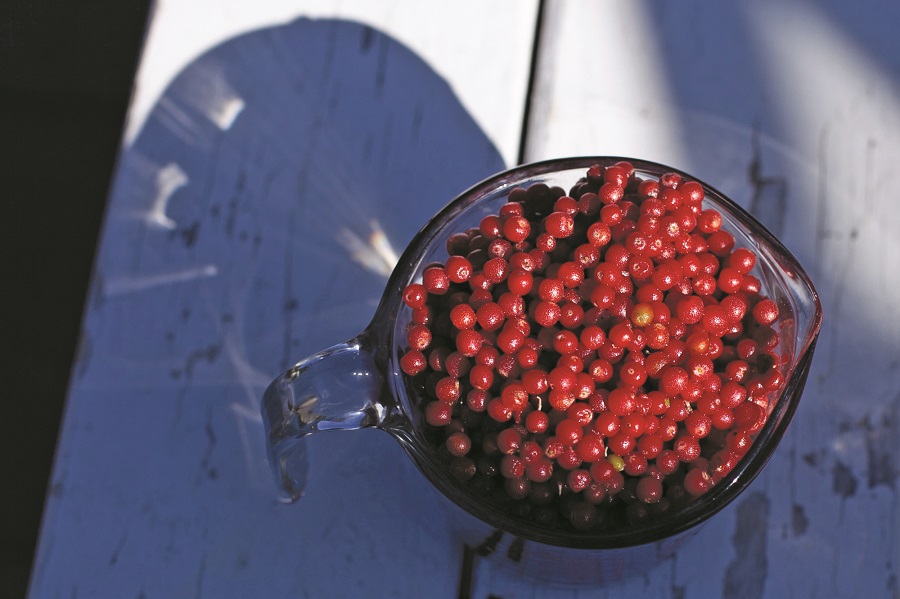
The plants grow wild on Cape Cod, although they are considered non-native invasives. They were brought to North America from Asia in the mid-1800s and planted to prevent erosion and provide wildlife habitat, but the species now outcompetes native plants in open meadows.
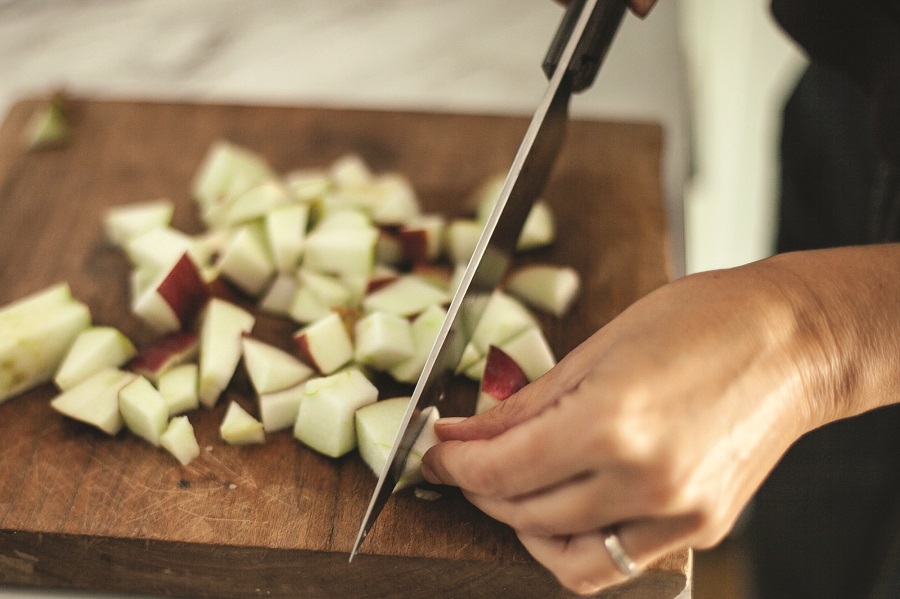
On a late September morning, we picked a few cups’ worth from the bushes along Emond’s road, then made jam by combining recipes from online sources, reducing the sugar for a version that brings out the fruit’s natural flavor. The process was easy and filled the kitchen with a pleasant perfume.
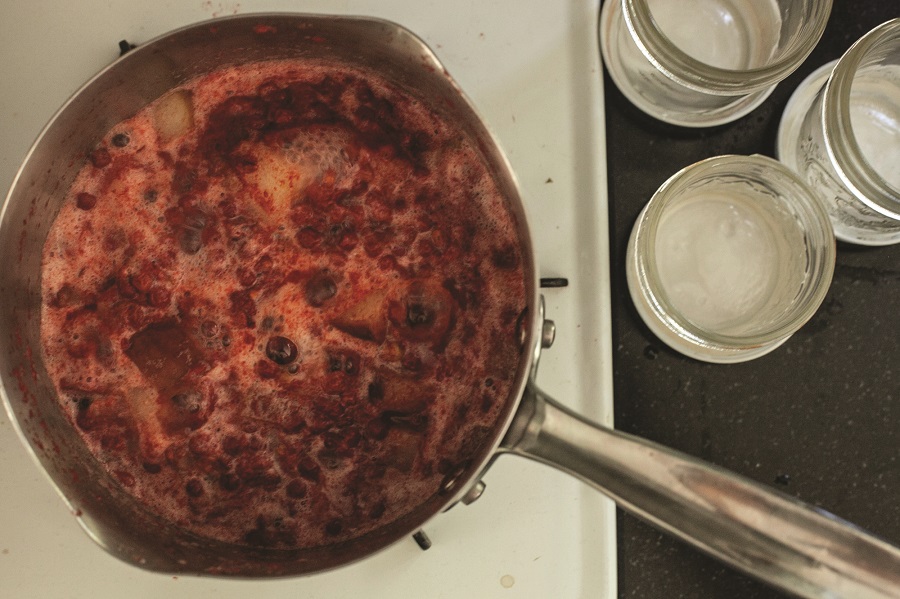
We had three jars of jam with a beautiful red color by noon — just right to round out an hour’s foraging expedition, though they didn’t last long on account of the jam’s irresistible flavor — fruity, sweet, and tangy.
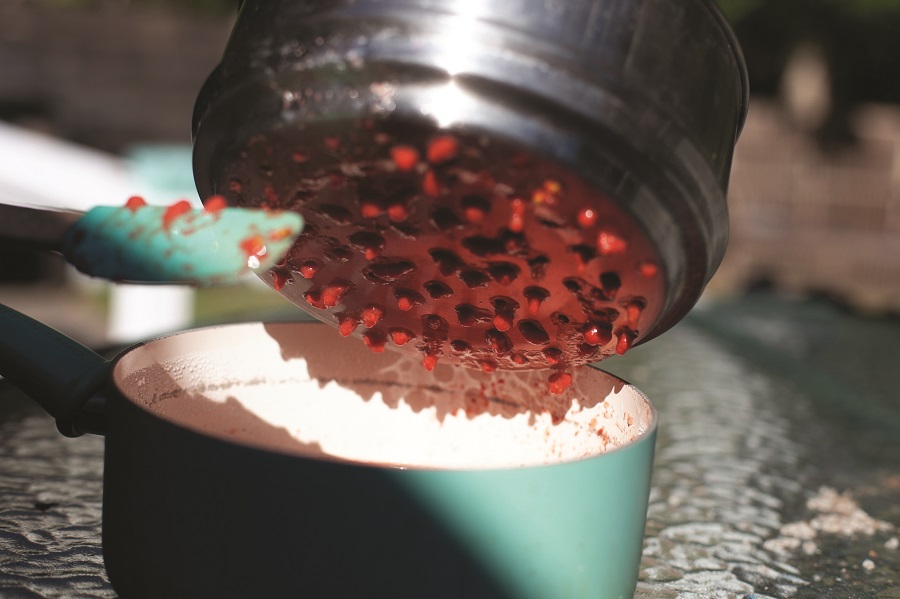
AUTUMN OLIVE JAM
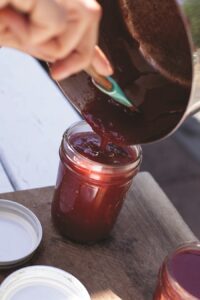
Makes 3 8-oz. jars
5 cups autumn olive berries
2 apples, skins on, cut into cubes
2 cups water
2 tsp. pectin powder
1 cup sugar
Juice of half a lemon
- Remove stems from fruit and rinse well under running water.
- Combine the cubed apple and the autumn olive berries with the water in a large saucepan and bring the mixture to a boil; reduce the heat and simmer for 15 to 20 minutes.
- While the fruit simmers, prepare your jars. Sanitize and preheat 3 or 4 clean 8-oz. canning jars by boiling them in water for 10 minutes.
- Strain the pulp. We used a potato ricer to start, then strained the mixture a second time, pushing it through a mesh strainer. Squeeze out as much juice as possible and discard the pulp.
- Combine the strained berry juice with the pectin, sugar, and lemon juice and cook the mixture on low heat for 15 to 30 minutes, stirring continually so that the bottom doesn’t burn.
- To determine when the mixture is the right consistency, do the spoon test: place a plate in the freezer and occasionally put a spoonful of the fruit mixture on the frozen plate. Immediately it will take on the consistency that the jam will have upon cooling. Once you achieve your desired consistency, pour the jam into the clean, hot jars, being careful the edges of the jars are free of drips before putting the lids in place. If you plan to store the jam in the fridge and use quickly, there is no need to process the jars. For pantry storage, process the jars according to the jar maker’s instructions.
- Let the finished jam set for 24 to 48 hours before you open it and slather it on fresh bread or spoon it over vanilla ice cream.
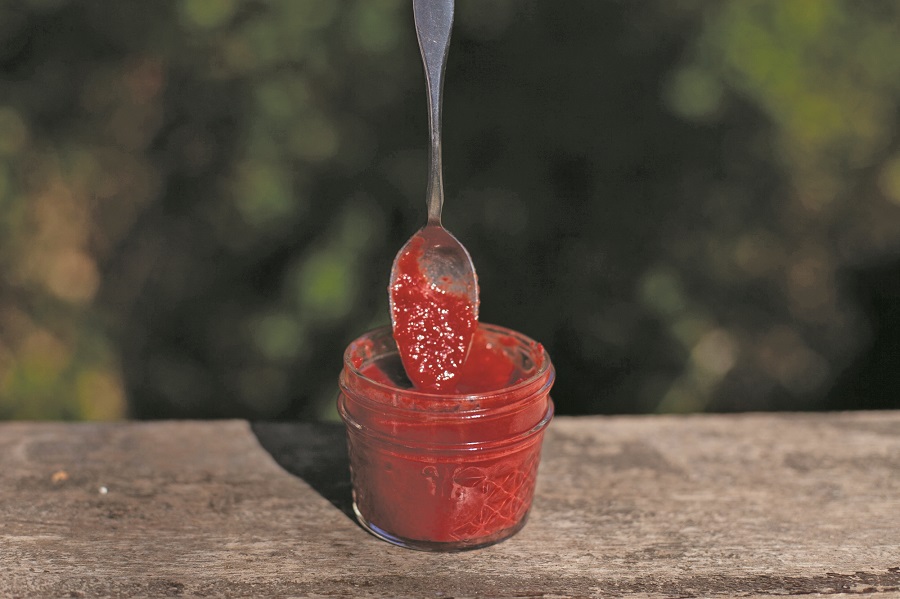
This sweet and tangy jam is delicious on fresh bread or as a topping on vanilla ice cream.



